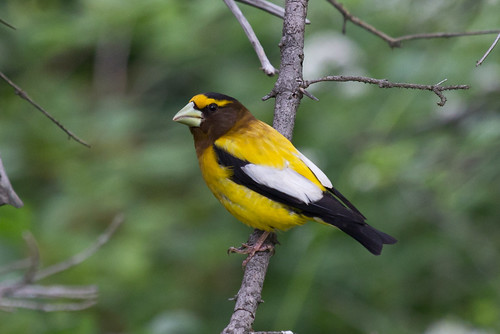 |
| Evening Grosbeak |
 |
| Dead little Pine Siskin from May 2015 |
We had a huge warbler migration fall-out in Duluth this spring, so the death toll was much larger than most years, but then again, last fall we had a similar fall-out, and several birds struck my windows then. Most survived, but research indicates that about 50 percent of the birds that fly off end up dying later from various internal injuries, especially subdural hematomas. One woman found a bunch of dead birds under the windows at the new Duluth Airport, lots of birds were found under windows at UMD, and there were also a bunch of carcasses documented under some of the huge windows at one of Essentia Health’s buildings.
 |
| Dead birds picked up at one window at UMD on one day in autumn 2014 |
On and off, some UMD students have tried to gather information about window strikes in Duluth, but we have never had any kind of consistent long-term study to see just how many birds are killed at our windows in Duluth year after year.
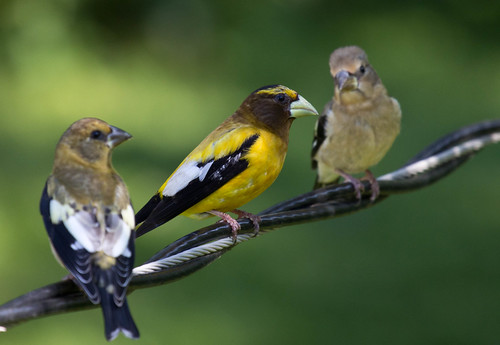 |
| Evening Grosbeak adult male and two fledglings |
 |
| Evening Grosbeak decline in the central states (including Minnesota and Wisconsin) based on Breeding Bird Survey numbers. |
Dr. Daniel Klem of Muhlenberg College has spent his career documenting the carnage and studying how and why birds don’t see glass. For decades he was virtually the only scientist looking at the issue. Ironically, some of his papers were rejected from major journals for no reason except that he cited so many of his own papers in them—entirely because there were no other papers out there to refer to.
Dan has devoted a lot of time and attention to ways we can prevent window kills, too. We need a two-pronged approach, helping homeowners like me to make our already-built windows safer, but also to encourage architects and builders to make new construction safer. Here are photos of some of the strategies we homeowners can use to prevent some of those collisions.
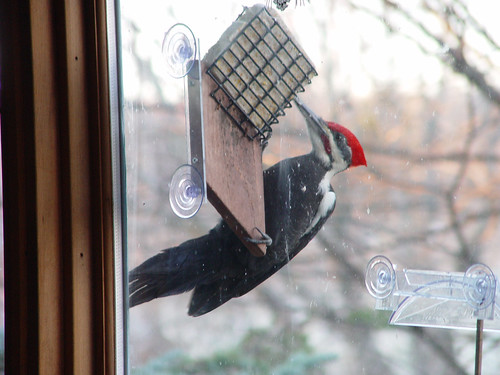 |
| Placing feeders directly on windows or within 3 feet of them makes it easier for birds to notice the glass or, if they don't, to be flying too slow on takeoff to be injured seriously. |
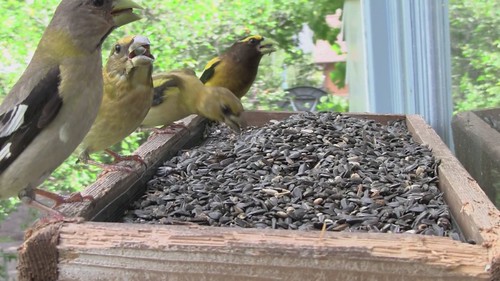 |
| If you watch this video, notice the young male who reacts to his reflection in the window and then seems to figure it out. |
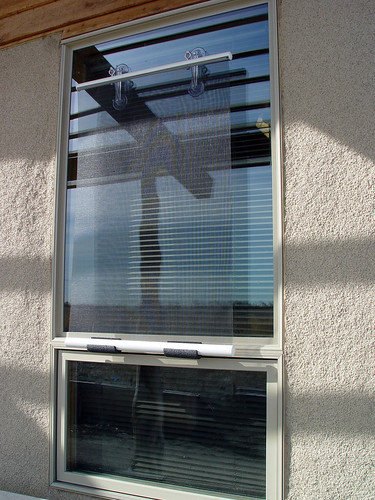 |
| Screening on the OUTSIDE of the glass can prevent collisions and, when birds do collide, can prevent serious injuries. This screening is sold by the Bird Screen Company. |
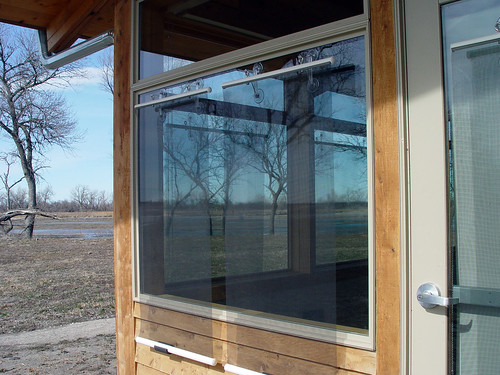 |
| Another window with screening from The Bird Screen Company. These two photos were taken at the Audubon Rowe Sanctuary in Kearney, Nebraska. |
| Window covered with taut bird netting at the Cornell Lab of Ornithology. |
| The netting at the Lab is set a good 6 inches from the window glass, and works like a trampoline for birds that don't notice it, though few birds collide at all. |
| You can see how reflective these windows are. The netting makes a huge difference. |
| This is my husband's hand showing the basic size of the netting. |
| Here is a photo taken from the inside of the Lab. The netting doesn't obscure the view much at all. |
No matter what we do, as I discovered, none of these methods are 100 percent effective, but they do at least reduce the carnage. But we must also find ways to get people to do the right thing as far as new construction.
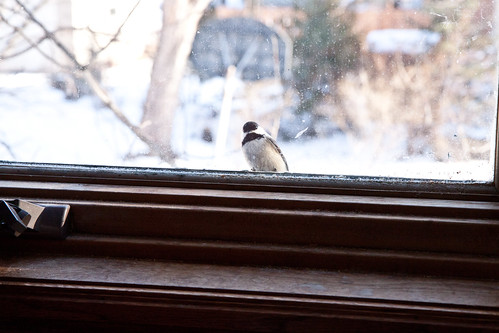 |
| Once birds figure out windows, they may even come tap on them to get our attention when they want the feeder filled. |
I’m horrified that the Minnesota Vikings, and the commission Governor Dayton named to design the new stadium, completely blew off the issue despite the fact that the stadium is located in the center of an area famous for its heavy bird migration. The company manufacturing the dangerous glass is also one of the companies that manufacture a fritted glass that is very effective at reducing collisions—and that particular glass is also far, far more energy efficient than the bird-killing glass they’re using. Why they refused to even consider switching early on, when the cost difference would have been minimal, mystifies and frustrates me. Some of my friends insist that we don't need environmental regulations because people are inclined to "do the right thing" entirely on their own, but I sure don't see that.
I wish I knew how to get more attention focused on this issue. In Duluth we’ve had plenty of new construction of huge apartment buildings and hotels in the past decade, and are going to be having a major new project directly under Hawk Ridge, but no one in the city is taking the issue seriously, and those of us who do understand what a serious problem it is feel helpless to change things. Even major environmental organizations focused on birds aren't speaking out about this. Feeling helpless makes us all want to just close our eyes and think about happier things. So my next post will be about something happier—one Red-eyed that hit my window in May that survived—and is apparently doing just fine.